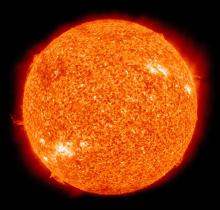Listen to today's episode of StarDate on the web the same day it airs in high-quality streaming audio without any extra ads or announcements. Choose a $8 one-month pass, or listen every day for a year for just $30.
You are here
Preserving History
If you have some spare time on your hands, you might want to spend it helping out astronomers. You can sift through pictures and other data to help scientists find what they’re looking for. Projects include classifying stars and galaxies, searching for planets in other star systems, and many others.
At least one project is preserving part of astronomical history. Project Phaedra is going through 2500 notebooks recorded in the late 19th and early 20th centuries. The notebooks were kept by women working at Harvard College Observatory.
Known as “computers,” the women pored over images taken by male astronomers, and made the tedious calculations needed to analyze the observations.
Some of the women became astronomers in their own right, and made some of the most important contributions of the era. Annie Jump Cannon developed a new way to classify stars, and it’s still in use today. Henrietta Swan Leavitt devised a way to measure the distances to other galaxies. And Cecilia Payne was the first to propose that stars are made mainly of hydrogen and helium.
Project Phaedra volunteers transcribe their notebooks. The logs include the women’s calculations, notes about the glass plates they were examining, tables of data, and more. The project has been going on for several years, so many of the notebooks have been finished. But others remain — preserving an important era in the history of astronomy.
Script by Damond Benningfield





